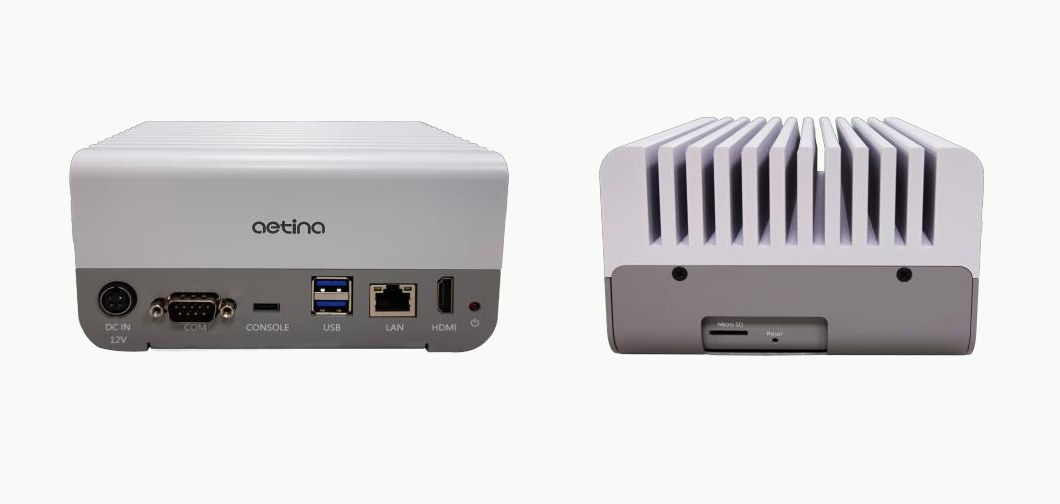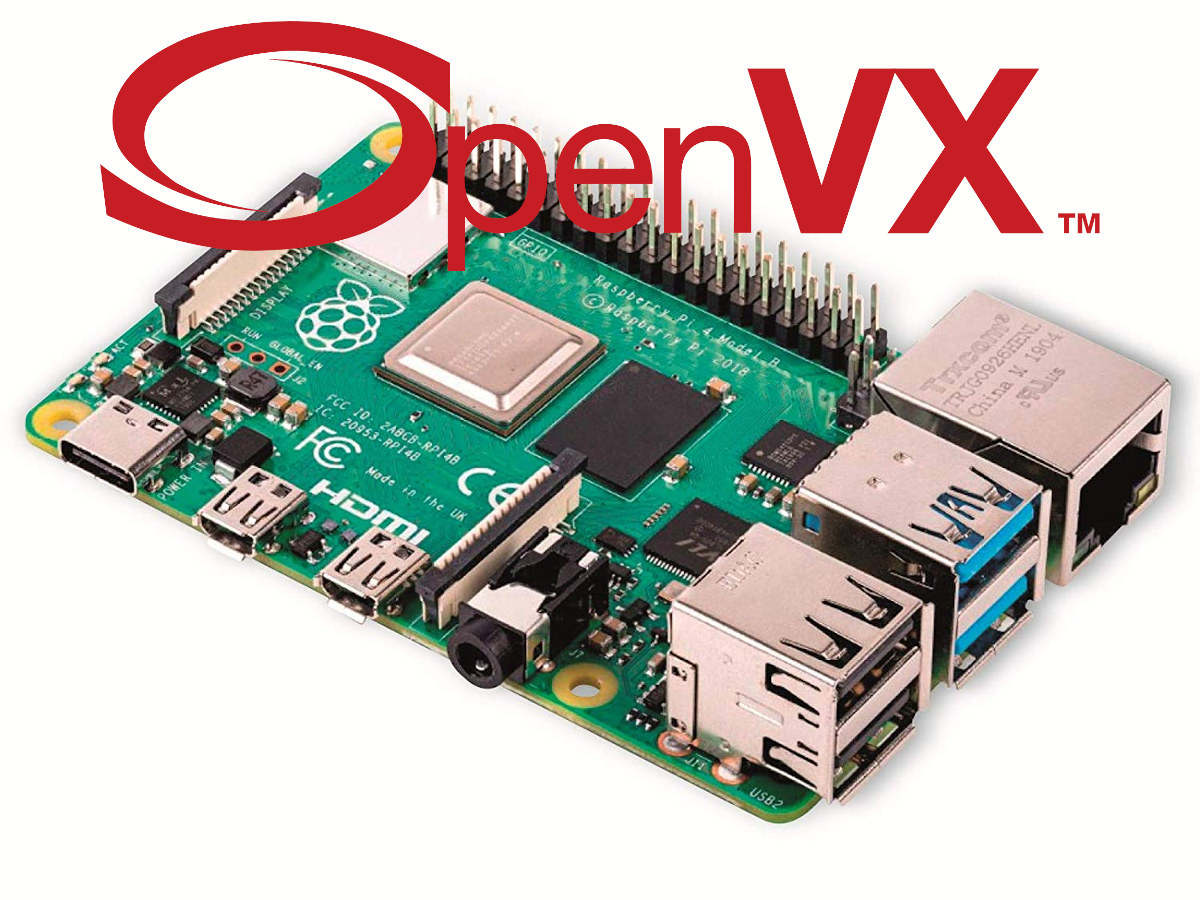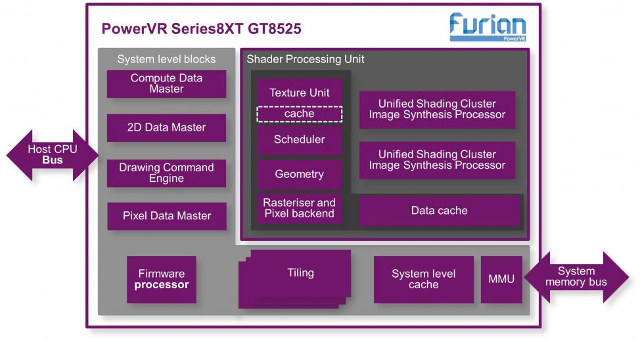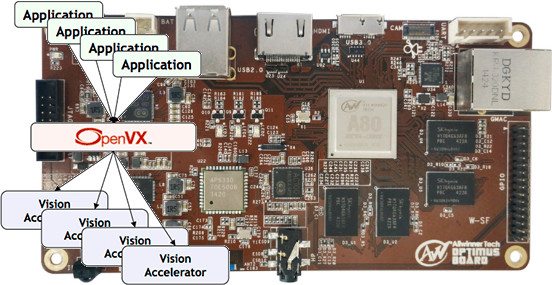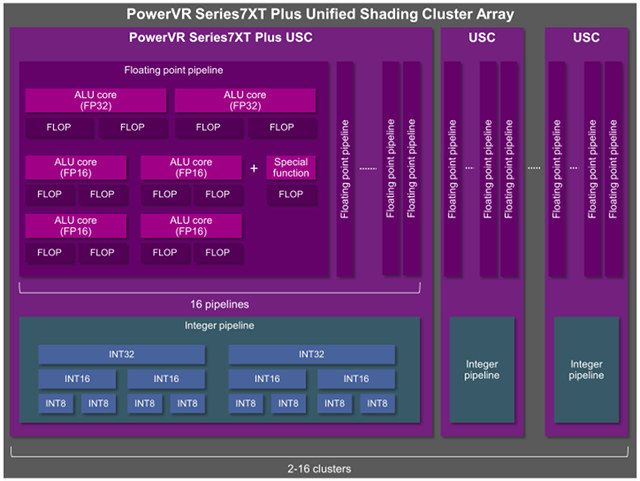Aetina AIE-CP1A-A1 is a compact, ASIC-based Edge AI system powered by the Blaize Pathfinder P1600 embedded system-on-module (SoM) equipped with dual-core Cortex-A53 processor, the Blaize Graph Streaming Processor (GSP) architecture delivering up to 16 TOPS, and 4GB RAM. The Aetina AI inference system also comes with 8GB eMMC flash, HDMI video output, Gigabit Ethernet, two USB 3.2 ports, and a serial interface, with the small-sized embedded computer targetting computer vision applications such as object detection, human motion detection, and automated inspection. Aetina AIE-CP1A-A1 specifications System-on-Module – Blaize PathFinder P1600 SoM SoC – Blaize 1600 dual ArmCortex A53 processor with H.264/H.265 encode and decode, MIPI CSI/DSI camera interfaces, PCIe Gen 3.0, Blaize GSP 16 TOPS AI accelerator supporting INT8, INT16, BF16, FP16, FP32, and FP64 data formats System Memory – 4GB LPDDR4 Storage – 64 MB Quad SPI NOR Flash Carrier board interface – 400-pin board-to-board connector Cooling – Thermal transfer […]
Raspberry Pi SBC Now Supports OpenVX 1.3 Computer Vision API
OpenVX is an open, royalty-free API standard for cross-platform acceleration of computer vision applications developed by The Khronos Group that also manages the popular OpenGL ES, Vulkan, and OpenCL standards. After OpenGL ES 3.1 conformance for Raspberry Pi 4, and good progress on the Vulkan implementation, the Raspberry Pi Foundation has now announced that both Raspberry Pi 3 and 4 Model B SBC’s had achieved OpenVX 1.3 conformance (somehow dated 2020-07-23). Raspberry Pi OpenVX open-source sample implementation passes the Vision, Enhanced Vision, & Neural Net conformance profiles specified in OpenVX 1.3 standard. However, it is NOT intended to be a reference implementation, as it is not optimized, production-ready, nor actively maintained by Khronos publically. The sample can be built on multiple operating systems (Windows, Linux, Android) using either CMake or Concerto. Detailed instructions are provided for Ubuntu 18.04 64-bit x86 and Raspberry Pi SBC. Here’s the list of commands to […]
Imagination PowerVR “Furian” Series8XT GT8525 GPU Targets High-end Smartphones, Virtual Reality and Automotive Products
Imagination Technologies has unveiled their first GPU based on PowerVR Furian architecture with Series8XT GT8525 GPU equipped with two clusters and designed for SoCs going to into products such as high-end smartphones and tablets, mid-range dedicated VR and AR devices, and mid- to high-end automotive infotainment and ADAS systems. The Furian architecture is said to allow for improvements in performance density, GPU efficiency, and system efficiency, features a new 32-wide ALU cluster design, and can be manufactured using sub-14nm (e.g. 7nm process once available). PowerVR GT8525 GPU supports compute APIs such as OpenCL 2.0, Vulkan 1.0 and OpenVX 1.1. Compared to the previous Series7XT GPU family, Series8XT GT8525 GPU delivers 80% higher fps in Trex benchmark, an extra 50% fps in GFXbench Manhattan benchmark, 50% higher fps in Antutu, doubles the fillrate throughput for GUI, and increases GFLOPs for compute applications by over 50%. GT8525 GPU is available for licensing […]
Imagination PowerVR G6230 is the First GPU To Pass Khronos OpenVX 1.1 Conformance
The Khronos Group is the non-profit consortium group behind open standards and APIs for graphics, media and parallel computation such as OpenGL for 3D graphics, OpenCL for GPGPU, OpenVG for 2D vector graphics, etc… OpenVX is one of their most recent open, royalty-free standard, and targets power optimized acceleration of computer vision applications such as face, body and gesture tracking, smart video surveillance, advanced driver assistance systems (ADAS), object and scene reconstruction, augmented reality, visual inspection, robotics and more. The first revision of the standard was released in 2014, and the latest OpenVX 1.1 revision was just released in May 2016. We’ve already seen OpenVX 1.1 support in Nvidia Jetson TX1 module & board, but Khronos has a conformance program to test implementations, and if successful, allow companies to use the logo and name of the API. The version first GPU to pass OpenVX 1.1 conformance is Imagination Technologies PowerVR […]
PowerVR GT7200 Plus and GT7400 Plus GPUs Support OpenCL 2.0, Better Computer Vision Features
Imagination Technologies introduced PowerVR Series7XT GPU family with up to 512 cores at the end of 2014, and at CES 2016, they’ve announced Series7XT Plus family with GT7200 Plus and GT7400 Plus GPUs, with many of the same features of Series7XT family, plus the addition of OpenCL 2.0 API support, and improvements for computer vision with a new Image Processing Data Master, and support for 8-bit and 16-bit integer data paths, instead of just 32-bit in the previous generation, for example leading to up to 4 times more performance for applications, e.g. deep learning, leveraging OpenVX computer vision API. GT7200 Plus GPU features 64 ALU cores in two clusters, and GT7400 Plus 128 ALU cores in a quad-cluster configuration. Beside OpenCL2.0, and improvements for computer vision, they still support OpenGL ES 3.2, Vulkan, hardware virtualization, advanced security, and more. The company has also made some microarchitectural enhancements to improve performance […]


